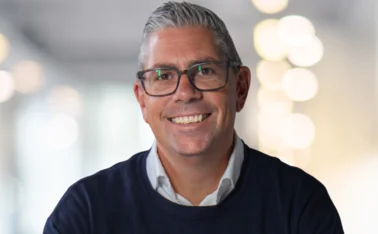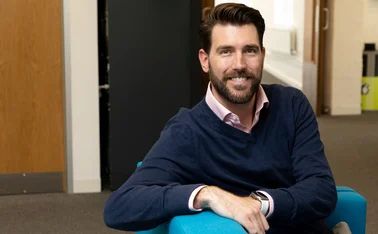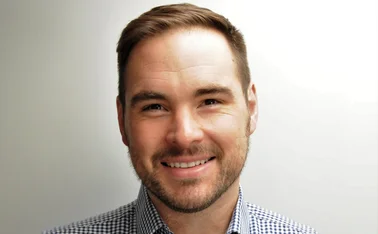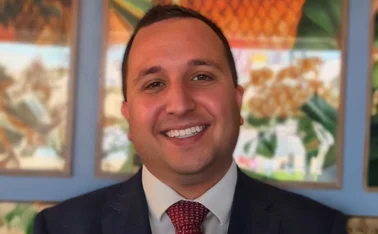
InsurTech roundtable: The cutting edge
With fast-moving InsurTech innovators entering the industry, our expert panel discusses how brokers can react and prepare for more changes
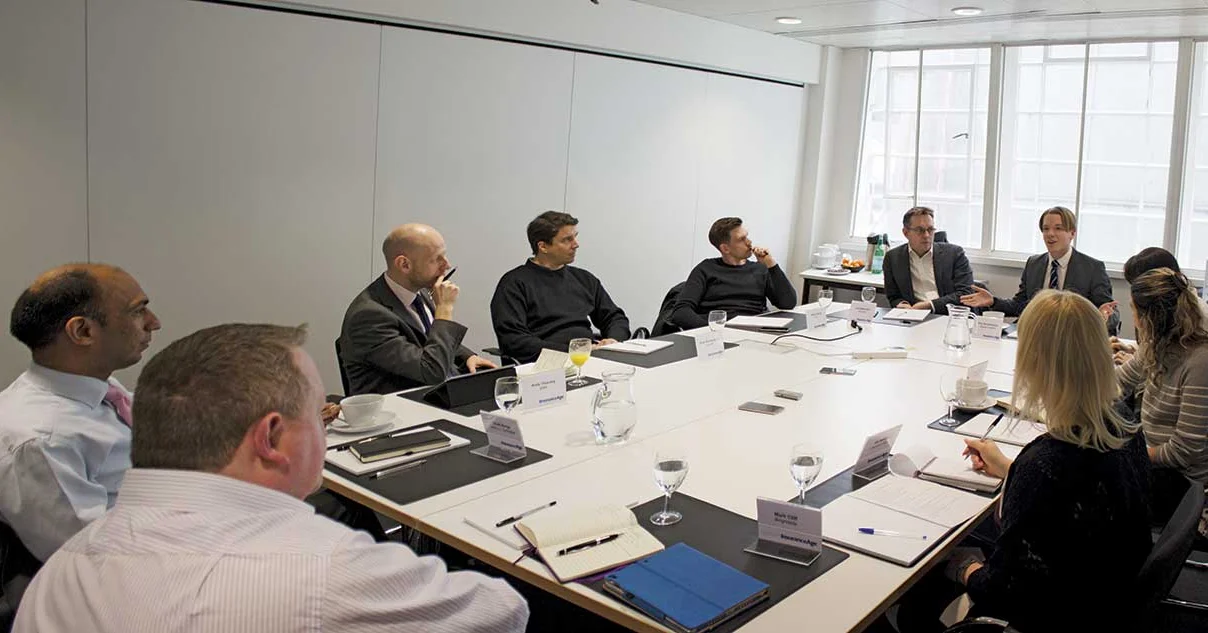
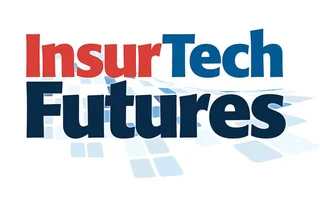
Attendees
Erik Abrahamsson
Chief executive officer, Digital FinePrint
Vivek Banga
Chief digital officer, Arthur J. Gallagher
Dylan Bourguignon
Chief executive officer, so-sure
Mark Cliff
Executive chairman, Brightside
Simon Harrow
Head of digital strategy and innovation, iGo4
Parul Kaul-Green
Head of M&A and innovation, Axa UK
Andy Thornley
Head of corporate affairs, the British Insurance Brokers’ Association
John Warburton
Chief executive officer, Konsileo
The InsurTech agenda has changed from disruption to partnerships – why?
▶ Andy: It sounds easier to disrupt than it is. The regulatory bar is high and it’s a relationship-driven business. If you don’t already have those relationships in place it can be difficult compared to an incumbent. Unique to insurance is that as well as investment capital, you need underwriting capital and with little understanding of the industry it can be difficult to arrange that capacity.
▶ Mark: Originally people thought they could disrupt the industry so easily that they actually brought out tech solutions – but to what problem? Those solutions weren’t customer orientated. InsurTech adds value in a land where private equity wants to acquire and invest in businesses. But essentially it’s about understanding how the technology collaborates with the people who understand the customers.
▶ Simon: It’s a matter of timing as well. It takes 12 months for an underwriter to actually create capacity and even then it’s small. You can’t get to enough scale before you’ve run out of money. The start-ups are starting to realise that getting to scale is much harder than they thought previously unlike any of these other industries where the regulation aspect alone doesn’t act as a blocker. And incumbents are realising that they can lean on these start-ups to help create some agility in their organisations.
What is the difference between innovation in personal and commercial lines?
▶ Vivek: The initial InsurTech offerings were all personal lines focused, largely reflecting the fact that a lot of start-up entrepreneurs will have greater personal experience of those products. There were some attractive opportunities in commercial lines, but there the buying behaviour of customers is different. Brokers are much more strongly entrenched in that market.
▶ Erik: I worked for Twitter before coming into insurance. In technology we tend to think about 10x – whether you can quantify a 10x benefit to customers should be the real metric. If you are an InsurTech and you’re targeting end consumers in personal lines then either you need to try to find a way to decrease prices by 90% or you need to add 10 times more value than an insurance company that has been around for years.
▶ Dylan: It’s hard to build a brand in personal lines. That said, trust in insurance is so low that frankly you can do it if you’ve got a truly differentiated product. There were a lot of people and backing going into this space initially. But if you look at Google AdWords insurance is the most expensive of all industries. The short-term capital backing these opportunities gets impatient very quickly when they realise insurance doesn’t go viral overnight.
The regulatory bar is high and it’s a relationship-driven business. If you don’t already have those relationships in place it can be difficult compared to an incumbent
Andy Thornley

What is the biggest challenge for brokers in InsurTech?
▶ John: The elephant in the room, particularly for commercial lines brokers, is that they are beholden to one of four software houses. Most brokers have got one arm behind their back when it comes to tech because they don’t control any of the levers related to it. And that is really a constraint on innovation.
▶ Andy: Moving from one software house to the other sounds like it should be easy but it’s not. That’s why a lot of brokers are reticent to move even when one particular software house has tech issues. You’d think that would be the starting pistol for a big exodus of customers but that didn’t happen. That said there’s innovation which doesn’t have to include software houses.

▶ Simon: People have the mentality that it can’t be done in insurance. It’s too big, too complex, there’s too much regulation and too many hoops to jump through. But actually when you find the stories of companies just trying small things they can add up to meaningful innovation at a corporate level, which starts to shift the momentum.
▶ Mark: The frustration is if I step back 25-30 years we used to have think tanks about how we can get policies that were more than 12 months long. Thirty years on those groups are still meeting. The industry is slightly strangled by its legacy and regulation.
The short-term capital backing these opportunities gets impatient very quickly when they realise insurance doesn’t go viral overnight
Dylan Bourguignon

How can these challenges be overcome?
▶ John: The answer is about expanding the offering from an ‘I will get you a quote’ proposition to ‘I am your risk partner’. It is about moving the frontier of what they’re offering – access to a market and being part of a value chain – to brokers themselves genuinely adding value to the consumer.
▶ Dylan: It’s interesting, but I’ve heard quite a few insurers saying why aren’t these InsurTechs just working together to provide us a full solution so that we can replace the incumbent software houses? But unfortunately there’s a lot of plumbing that’s required that’s not particularly exciting for anyone.
▶ Vivek: There is still a massive market and if start-ups and incumbents want to try something which is outside traditional legacy systems, it can be tried in a completely compliant manner using modern technology. Looking at new emerging categories the ability to experiment is much higher.

▶ Erik: Experimentation only works if the humans running the systems are actually externally focused. It’s about looking at the customers and doing a lot of great work. Some insurers and brokers are unfortunately more internally focused.
▶ Parul: Commercial lines brokers are truly knowledgeable, but this doesn’t translate into SME and personal lines. You could say that it’s the volume that’s a problem. But that volume problem can be solved by using artificial intelligence. Here is where technology can usefully make the moment of truth and understanding of really complex insurance contracts much easier.
▶ Erik: It assumes though that you are where your customers are. On average people watch TV for 120 minutes a day and they spend 120 minutes on social media. But what does the investment look like between insurance and brokers when they decide between TV advertising versus social media? Getting active on social media is the lowest hanging fruit in the industry for insurers and brokers because customers made that journey 10 years ago.
▶ Simon: There is a lesson though which is the application of technology for technology’s sake. Chat bots are all the rage. They’re not good enough. The AI behind natural language processing isn’t smart enough to be able to handle it.
We can’t encourage people to think differently if we don’t bring in different experiences and different ways of thinking
Parul Kaul-Green
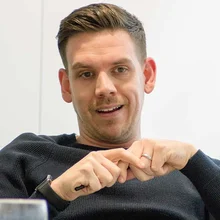
What initiatives should brokers be looking at?
▶ Vivek: Becoming a trusted adviser is the best space. Being a trusted adviser and complementing that advice with the right and appropriate technology is the holy grail. That’s where the best opportunities are.
▶ Erik: That could work really well when you combine it with the external focus that we’ve been talking about and learning from technology companies who’ve done it really well in other areas.
▶ Dylan: There are a whole bunch of tools that you could be using in terms of how you can engage with customers through different channels. The biggest issue at the moment is that typically insurance companies are broken up in silos. Everyone is adopting technology in a separate silo but no one is rethinking the whole customer experience from start to finish.
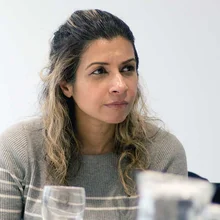
▶ John: I have three bits of advice. Hire a process person, empower the front end people to really give ideas and then challenge your vendors to make them scalable afterwards. That’s a really good path to innovation.
▶ Mark: It all comes back to understanding your customers. We live in a time poor society, how do we help them through this process? That may or may not be technology but there’s a lot of technology out there that allows for a far better customer journey.
▶ Parul: There is what we call meta-thinking which needs to be done in our industry. We think we are way too complex. But there are even more complex industries which have solved it with meta-analysis, using intelligence from other industries and bringing it back.
▶ Vivek: Sometimes you actually need someone to come from outside. Someone who has gone through some of these challenges we’ve discussed today – getting capacity, getting around legacy systems, getting around that mind-set and it becomes almost like a shining example.
▶ John: I don’t think there’s enough respect by InsurTech people in the incumbent expertise which exists. Brokers have got this deep expertise. They labour on despite the tools that are given to them being a bit rubbish. If you can just find a way to harness this expertise but in a more scalable way and give technology to them then you’re on to a winner.
▶ Parul: Insurance has a major problem of very similar people, and it’s not just background or gender or ethnic configuration. We can’t encourage people to think differently if we don’t bring in different experiences and different ways of thinking.
Only users who have a paid subscription or are part of a corporate subscription are able to print or copy content.
To access these options, along with all other subscription benefits, please contact info@insuranceage.co.uk or view our subscription options here: https://subscriptions.insuranceage.co.uk/subscribe
You are currently unable to print this content. Please contact info@insuranceage.co.uk to find out more.
You are currently unable to copy this content. Please contact info@insuranceage.co.uk to find out more.
Copyright Infopro Digital Limited. All rights reserved.
As outlined in our terms and conditions, https://www.infopro-digital.com/terms-and-conditions/subscriptions/ (point 2.4), printing is limited to a single copy.
If you would like to purchase additional rights please email info@insuranceage.co.uk
Copyright Infopro Digital Limited. All rights reserved.
You may share this content using our article tools. As outlined in our terms and conditions, https://www.infopro-digital.com/terms-and-conditions/subscriptions/ (clause 2.4), an Authorised User may only make one copy of the materials for their own personal use. You must also comply with the restrictions in clause 2.5.
If you would like to purchase additional rights please email info@insuranceage.co.uk


